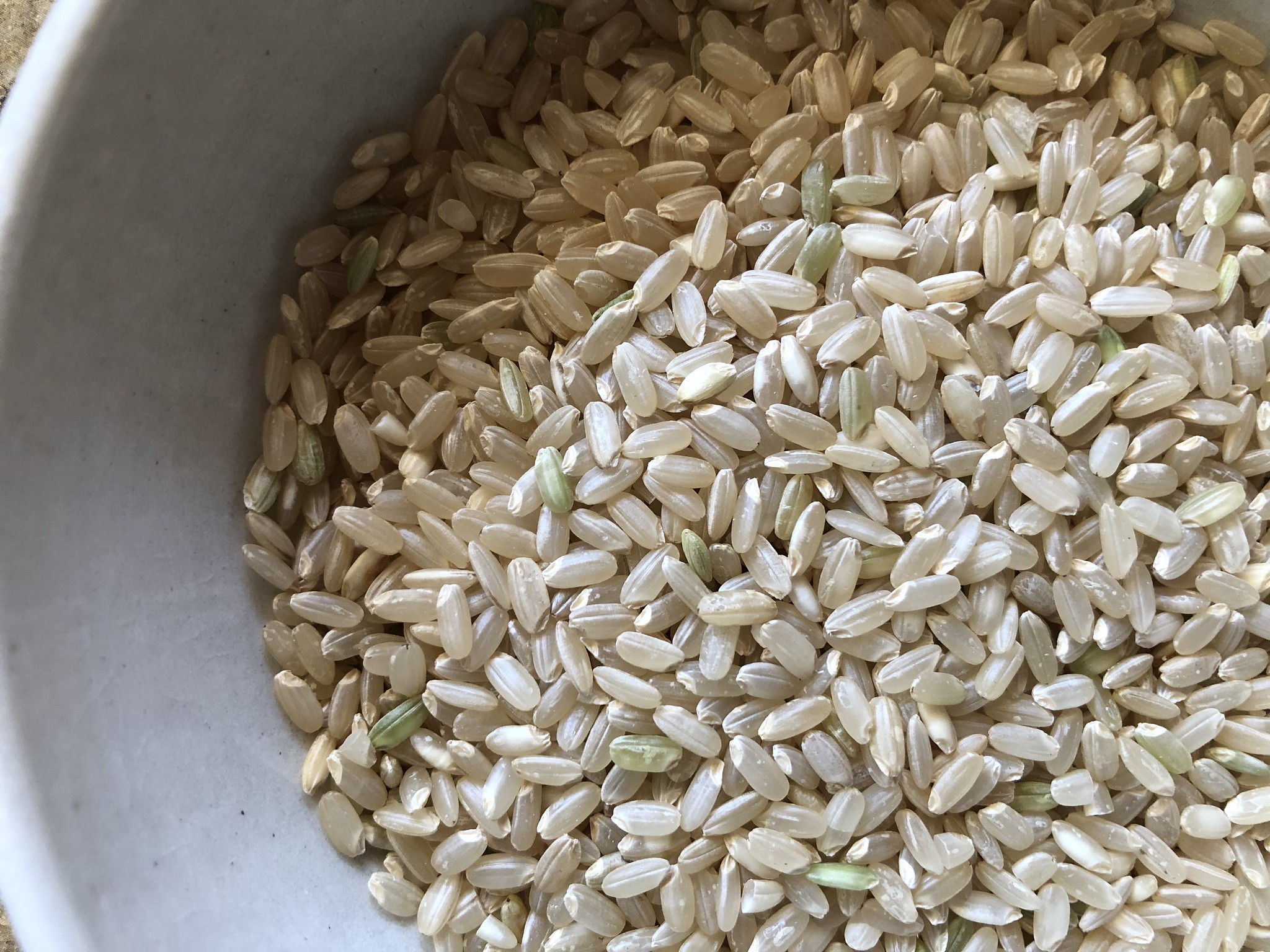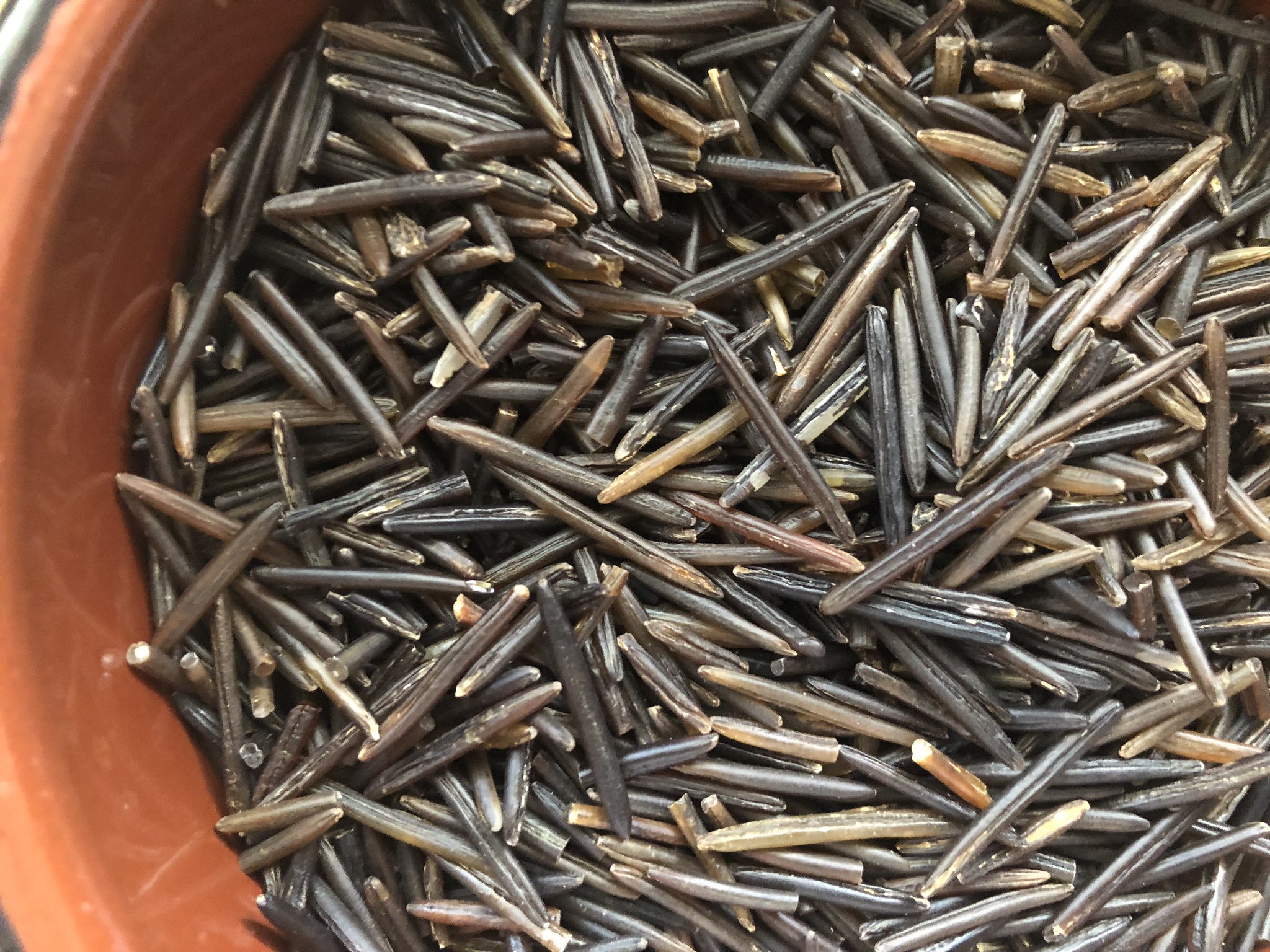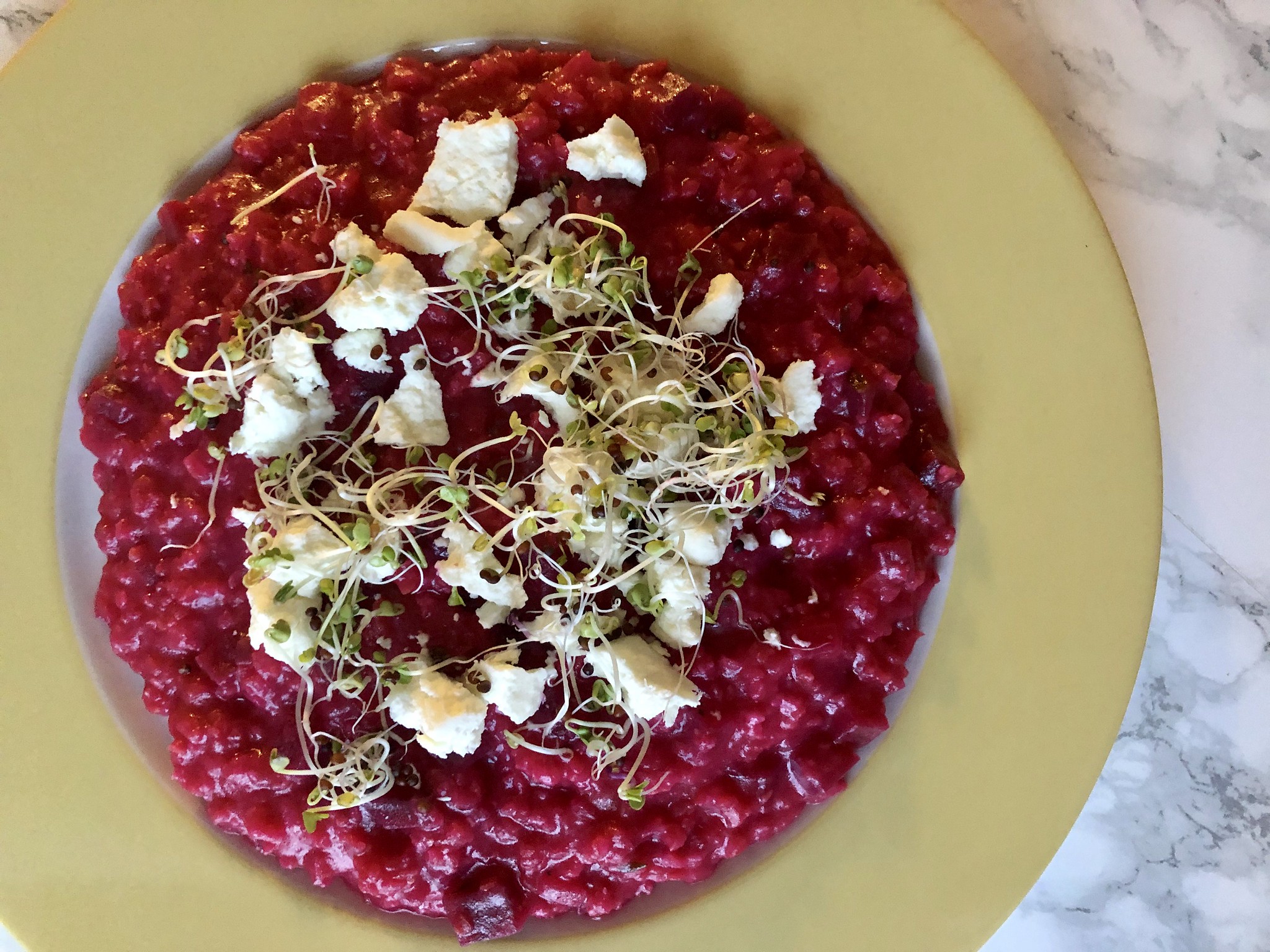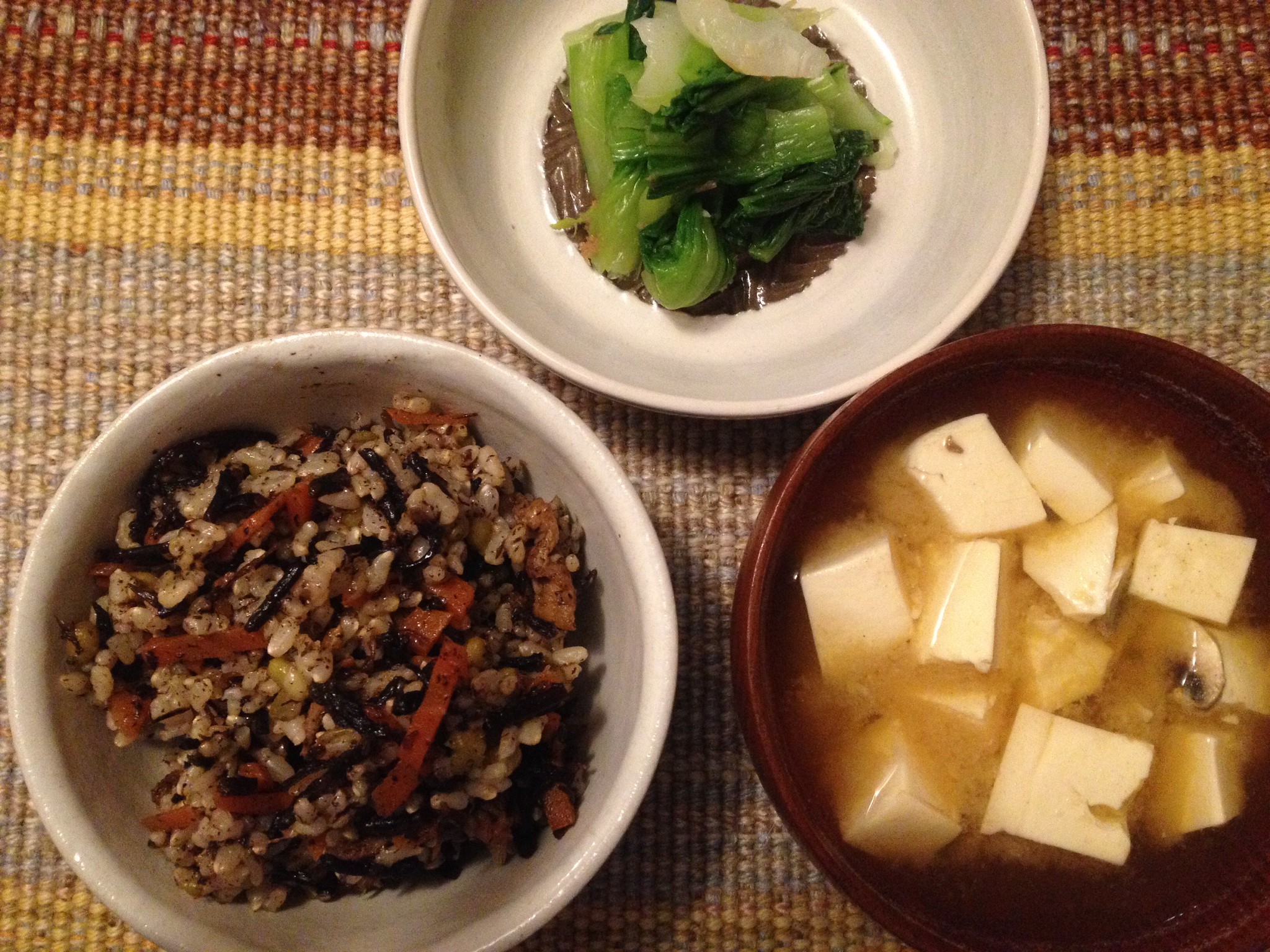Demystifying Rice

Rice.
It is one of the most consumed foods in the world. India alone boasts several dozens of cultivars, each one adapted to regional growing conditions. In Tokyo, there is a shop devoted to all things rice; it stocks several varieties hailing from different regions of Japan, each with unique flavour profiles. In several cultures, the word for rice often refers both the food itself and the meal: "Gohan desu" in Japanese means 'dinner time' but can be literally translated to 'it's rice'; whereas in Cantonese, 'to eat rice' can also mean 'let's eat.' It goes without saying that, given how widespread its consumption, there are countless ways to cook rice, each with their pluses and minuses.

Though there are hundreds of varieties of rice, they can essentially be classified into three categories: short, medium or long grain. Generally speaking, the shorter the grain, the higher the starch content, and therefore the stickier the grains will be when cooked. Brown, red, and black rice are all whole grain rices, and are therefore much more nutritious than white rice. Cooking whole grain rice is slightly more time consuming than cooking white rice, but the nutritional gains greatly make up for the extra time. Vietnamese yellow rice is a dish made of sticky rice, split mung beans and coconut, and is not a type of rice.

Most commonly available types of rice
Asians - long grain Thai Jasmine and Indian Basmati; short grain Japanese; medium grain Japanese and Korean; long, short or black sweet (glutinous) rice; medium grain black rice, sometimes labelled purple rice.
European -medium grain red or black (usually from France); Italian - Vialone nano and Carnarolli (short), Arborio (medium); Spanish -Bomba or Valencian rice (short).
Other European countries also produce rice, but are less commonly seen outside their country of origin.
African - medium to long grains, not generally found outside of the African continent due to low yields, but believed to be the origin of Southern US and Carribean heirloom strains of rice.
North American - wild rice, very long grain.

Cooking rice is not rocket science, however, there is a method behind the madness, so it is important to understand it in order to get it right each and every time. While I normally prefer using weight measures for cooking, rice is the only ingredient for which I find volume measurements to be most reliable: any measuring implement can be used as long as the same one is used throughout the entire process. I like to use a small drinking glass or bowl because they allow me to count out portions, but any container can be used.

Asian cultures, especially on the Indian sub-continent, have devised several different cooking methods, each one giving very different results. Cooking methods can be divided into three categories: absorption, immersion and steaming. Generally speaking, Asian methods of cooking rice always begin with a vigorous and lengthy process of washing the grains. This is done by swishing rice in cool water, and changing the water until it no longer turns opaque. Simply placing the rice in a colander and leaving the tap to run does not give the same results. Washing rice removes excess fines (rice flour resulting from the milling process, not to be confused with rice starch) which, if left unwashed, could result in gluey, cooked rice. Washing is unnecessary for whole grain rice.
For everyday rice, I prefer the absorption method: it is easy and relatively quick, and can be done on the stove top or in a rice cooker, if you have one. Simply put, you measure out the rice; give it a good wash; drain in a colander and shake out any excess water. Place the rice in a pot, measure out the water and pour into the same pot. Cover the pot with a tight fitting lid; certain types of rice benefit from a soak at this point. After soaking, bring up to a boil. When steam starts shooting out from under the pot's lid, turn the heat down to low, and leave to simmer until done. The chart below lists all the variations for different types of rice. If using a rice cooker, put rice and water in the cooker, soak if necessary, turn the pot on, and forget about it. For whole grain rice (brown, red, black, and wild), do not use the soaking water to cook the rice, cook in fresh water.
Type of Rice
|
Wash
|
Water Ratio
rice to water by volume |
Soak
|
Simmering Time
after boling |
Resting Time
after simmering |
White, long grain
|
yes
|
1:1
|
no
|
15min
|
no
|
White
short or medium grain |
yes
|
1:1
|
30min
|
15min
|
15min
|
Brown
short and long grain |
no
|
1:1.5
|
1hr to
3 days |
20-25min
|
15min
|
Black and red rice
|
no
|
1:1.5
|
1hr to
3 days |
20-25min
|
no
|
Wild rice
|
no
|
1:1.5
|
15 to 30min
|
20-25min
|
15min
|
.
Pilaf or pilau rice is essentially a variation on the absorption method. The grains of rice are gently fried in a generous amount of butter or oil - enough so that each grain glistens - until the rice looks translucent, then water is added to the pan, and cooking can proceed as described above. Since the rice is fried, it is not strictly necessary to wash it before cooking, though it is customary. Frying binds the fines and prevent gumminess, but purists will argue that washed rice results in a more fluffy pilau. If you prefer to wash the rice beforehand, do so well in advance, and allow the rice to drain for 30 minutes before frying to minimize splattering.

Risotto and paella are also variations on the absorption method, however, the water ratio is much higher and the cooking time is longer. The simplest explanation is that both these dishes are cooked uncovered, so the extra liquid makes up for evaporation. But there is a slightly more complex reason as well: in both cases, the rice is often allowed to age after harvest before being put on the market, whereas Asian rice is usually packaged and sold as soon as possible - new season crops are often labelled as proof of freshness (some Indian brands of Basmati rice are aged and are labeled as such.) Aging rice causes a chemical change in its starches: they become more impervious to water to protect the seeds from spoilage, but it also means that each grain takes longer to absorb water and soften during cooking, resulting in a firmer bite (al dente) and extra fluffiness.

I have to admit that cooking rice by immersion is a bit of a mystery to me. Although cooking a handful of rice in a large pot of boiling water would seem no more difficult than cooking pasta, I still haven't met a cook who can claim to have mastered this technique. Timings will vary from 10 to 15 minutes of active boiling, and I've yet to encounter a plate of boiled rice that I like. The one advantage to cooking rice by immersion is that washing before cooking is unnecessary: since the cooking water is poured off, any loose fines are thrown away along with some of the starches. Boiled rice is rarely sticky and is unsuitable for eating with chopsticks or hands.
Biryani, a complex rice dish that is now very much part of Indian cuisine, is the love child of immersion and steam cooking. Long grain white rice is parboiled for 7 minutes, then drained and layered with fried onions, marinated meats or vegetables, topped with more rice, drizzled with a cupful of cooking water and possibly some clarified butter (ghee), covered with a tight fitting lid and returned to the stove top (or a pre-heated oven if you are a modern cook.) Left to steam for 20 minutes on a medium heat, the cooking liquor from the meats and vegetables trickle down, flavouring the bottom layer of rice and often forming a caramelized crust called tahdig in Persian. A remnant of the Mughal Empire, the Biryani method is still very much a part of Persian cooking.

While most of the abovementioned methods rely in part on steam to cook the grains of rice, I only know of glutinous rice as a true steamed rice. The name can be confusing - glutInous rice contains no glutEn: the name refers to the fact that this type of rice is very sticky (due to a high content of amylopectin - the sticky part of starch.) Sometimes refered to as sweet or sticky rice, it is the type of rice used to make Japanese mochi, Thai coconut rice, and Chinese sticky rice parcels (zongji), it also makes a far superior rice pudding to medium grain 'dessert' rice. Glutinous rice needs to be soaked overnight in ample water, drained then placed in a tea towel-lined steamer basket, and steamed over medium-high heat for about 30 minutes. However, I have been known to cook sticky rice by absorption, and can attest that it is perfectly fine, if somewhat less sticky than its steamed counterpart.

I know of very few people who do not appreciate a generous portion of fried rice. Done properly, it can be quite delightful. It is best done with left-over rice, preferably refrigerated: a chilly overnight rest firms up the starches, so that each indiviudal grain of rice can withstand constant stirring in a hot pan: if freshly cooked or warm rice is fried, it will mush up and turn gluey. Any type of left-over rice can be fried. It's a quick and easy method of re-heating rice: unless the intent is to produce a whole meal, there is no need to add too many ingredients to the rice. Simply fry the rice until hot, and season with salt and pepper or soy sauce.
Bon App'!
Fun Facts
Rice water is believed contribute to skin hydration, and has a long history as a skin toner: add it to your bath water to reap the benefits.
If water waste is a concern, collect the rice washing water for watering plants or the compost heap. Rice fines are very gently abrasive: when used to soak dirty dishes, rice water can make short order of the post-dinner washing up.




Comments
Post a Comment